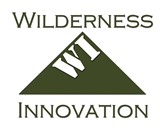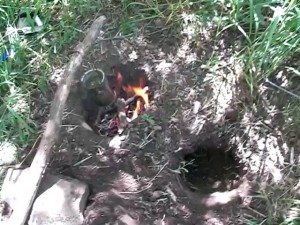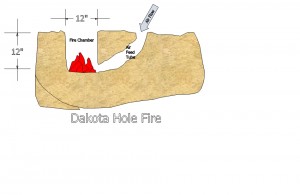I always thought of the Dakota Hole Fire as something mostly for stealth, when I wanted a fire, but didn’t want others to know, it is that, but also much more.
What are the reasons to build a Dakota Hole Fire?
- To have a fire that is not easily visible to others
- For a safe controlled fire in windy conditions
- Efficiency, cooking can be done with very little wood
- To leave an area visibly untouched-have a fire and leave no trace
- Ideal for use in partially sheltered conditions, like a lean-to, under a tarp or other open shelter
Let’s talk in a little more detail about each of the advantages of the Dakota Hole Fire
Stealth and Leave No Trace – Too many times we picture a fire as in the paintings of artists, like a blazing bonfire lighting up the night sky. There is nothing wrong with this at the appropriate time, but when out scouting or in a survival situation, it can be too much work and way too visible. A Dakota Hole Fire can give warmth and provide cooking heat for hours on end with a very small amount of wood. Small pieces are all that’s needed. When you are done with the fire, just fill in the holes, smooth over, replace sod if any, and no one will know you were there.
Fire in Windy Conditions – A Dakota Hole Fire can work very nicely in windy conditions that make standard fires difficult to light and control once going. This type of fire also contains most of the embers and sparks and so reduces the danger of the fire spreading. The whole fire is below ground level, oxygen is fed through the air feed hole. I have started the fire down in the hole, so that it is contained beginning to end.
Efficiency – There is no fire that is as effective with so little fuel. You can cook and heat with nothing but twigs and small sticks. This fire is kind of like using our Twig Stove. All the heat of the fire is contained in the hole, it’s only escape is straight up. Meals can be cooked in a can or pot hung from a stick or you can fashion a grill of green sticks. You don’t want to spend all your time and energy gathering fire wood, so this fire is ideal in survival situations.
Use in Open Shelters – Since the fire is so small and is below ground level, it is safe and effective for use in partially sheltered conditions. I have used it under a tarp, in a lean-to and debris hut very successfully.
The Dakota Hole Fire is a great fire to build, not too many people ever use it, which is too bad. It is very simple to construct and use. For survival training practice making it and using it. See the drawing and photo for how to lay it out. We also have a video posted on our YouTube Channel [link] that shows how to make it using scavenged tools. Try it sometime, you’ll like it.
Until next time this is Perry Peacock – Simplifying Survival






Hey Perry,
I have never heard of this method but will have to try it on our next camping trip. I love that it leaves no trace and uses fuel so efficiently. One aspect of a camp fire on the trail that bugs me the most is having to continually look for fuel. How big does the air feed hole have to be? Thanks, as always, for the great info!